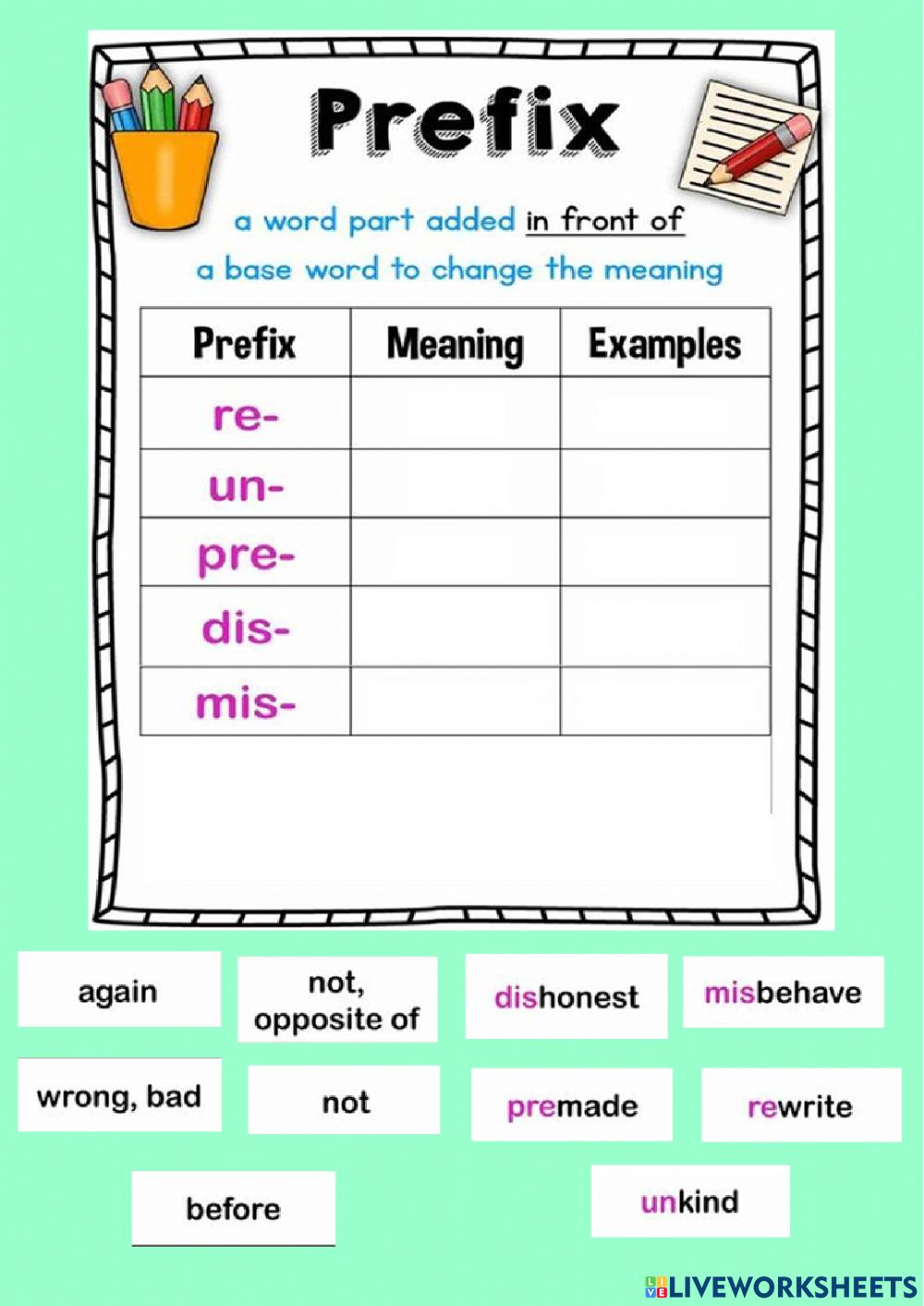
Mastering Vocabulary: The Indispensable Role of Prefixes Worksheets
In the vast and intricate landscape of the English language, vocabulary is the bedrock upon which effective communication is built. A rich vocabulary empowers individuals to express complex ideas, comprehend nuanced texts, and navigate the world with greater clarity. While rote memorization of words certainly has its place, a more profound and efficient method of vocabulary acquisition lies in understanding word structure – specifically, the power of prefixes. This is where prefixes worksheets emerge as an indispensable tool for educators, students, and language learners alike.
This comprehensive article will delve into the critical importance of prefixes, explore the diverse types of prefixes worksheets available, outline their myriad benefits, and provide strategies for their effective implementation, ultimately demonstrating why they are a cornerstone of robust language development.
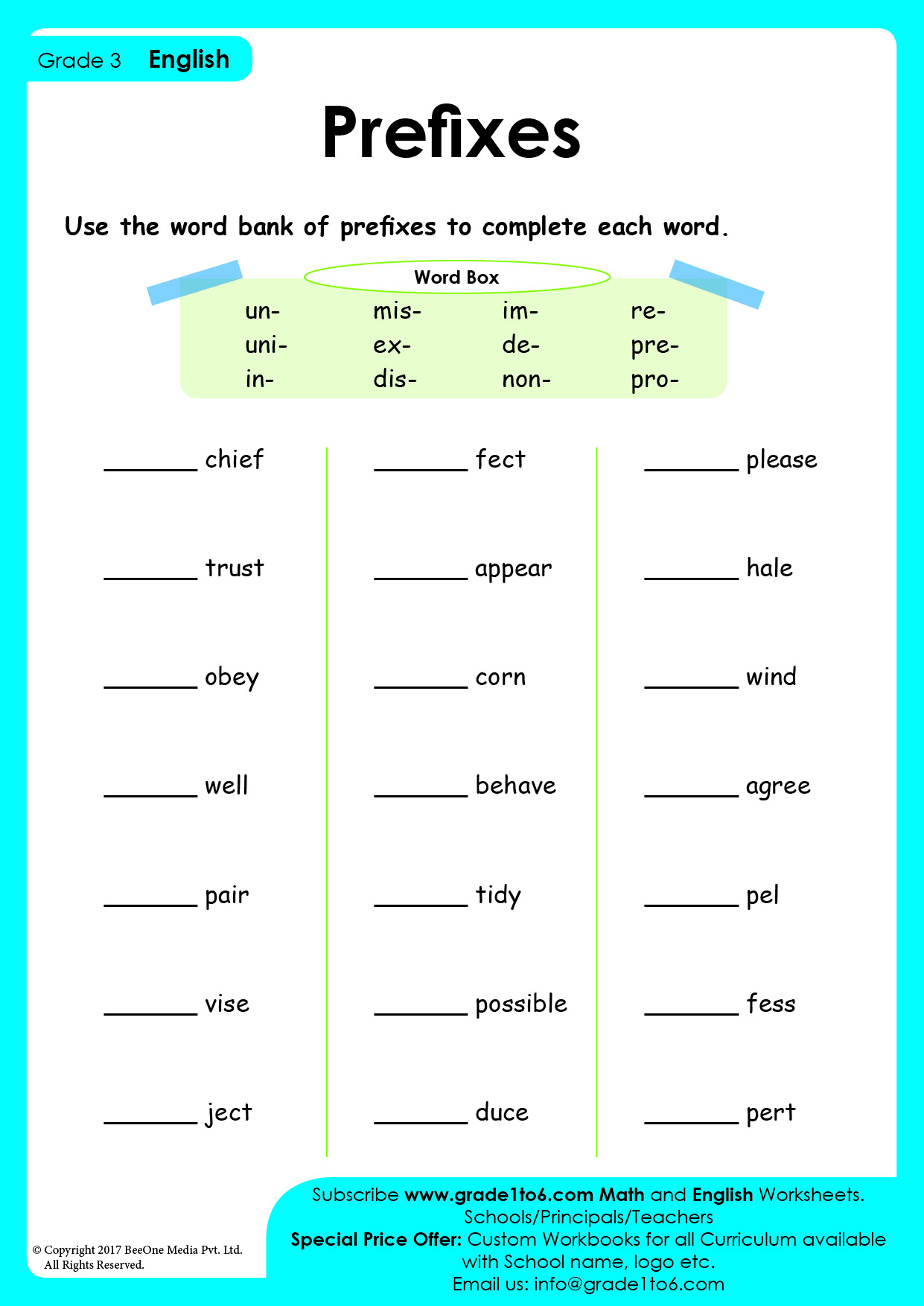
The Crucial Role of Prefixes in Language Acquisition

A prefix is a group of letters placed at the beginning of a word to change its meaning. By understanding common prefixes, learners gain the ability to unlock the meaning of countless new words without having to look up each one individually. This morphological awareness is a superpower for vocabulary expansion and reading comprehension.
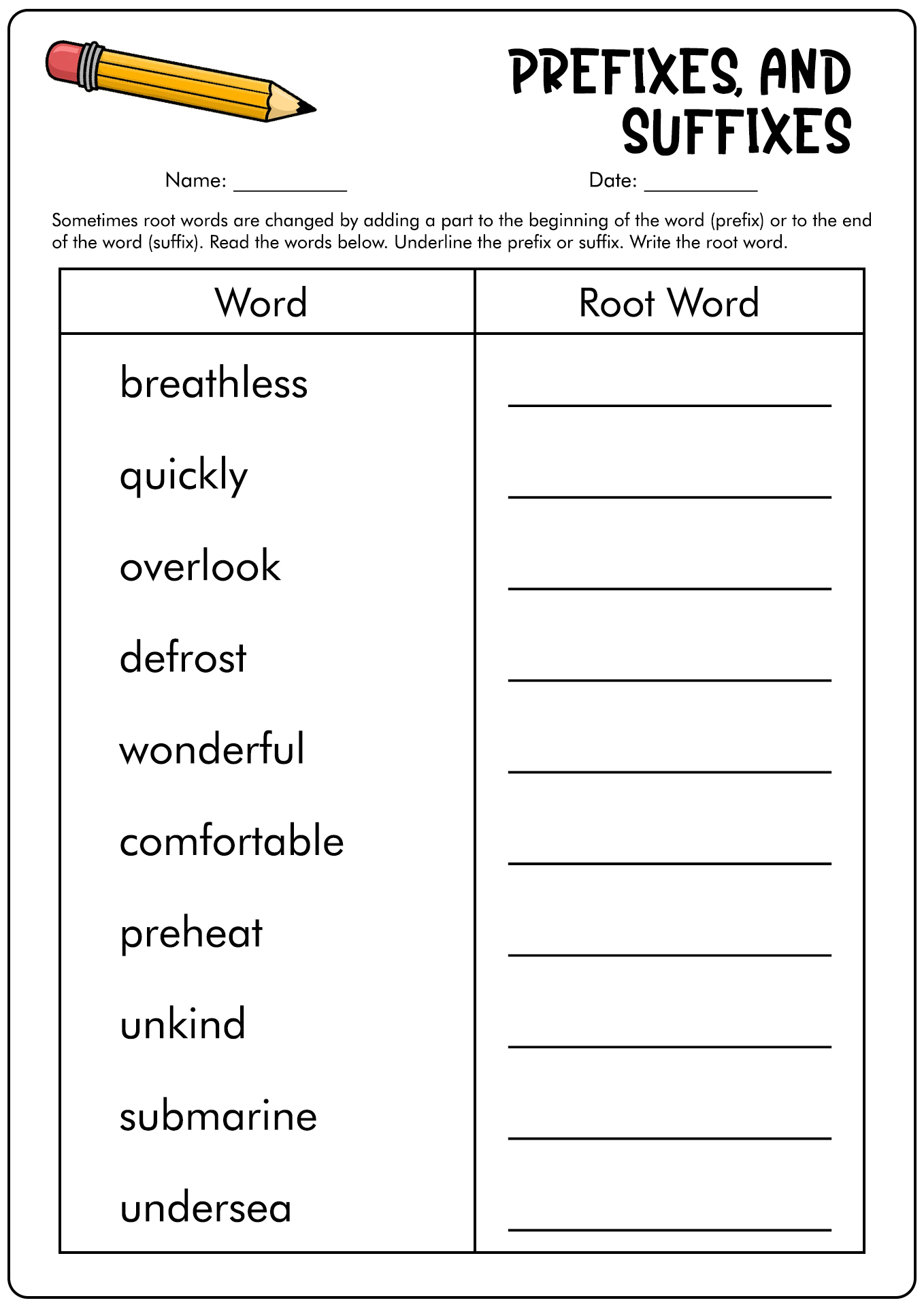
Consider these common prefixes:
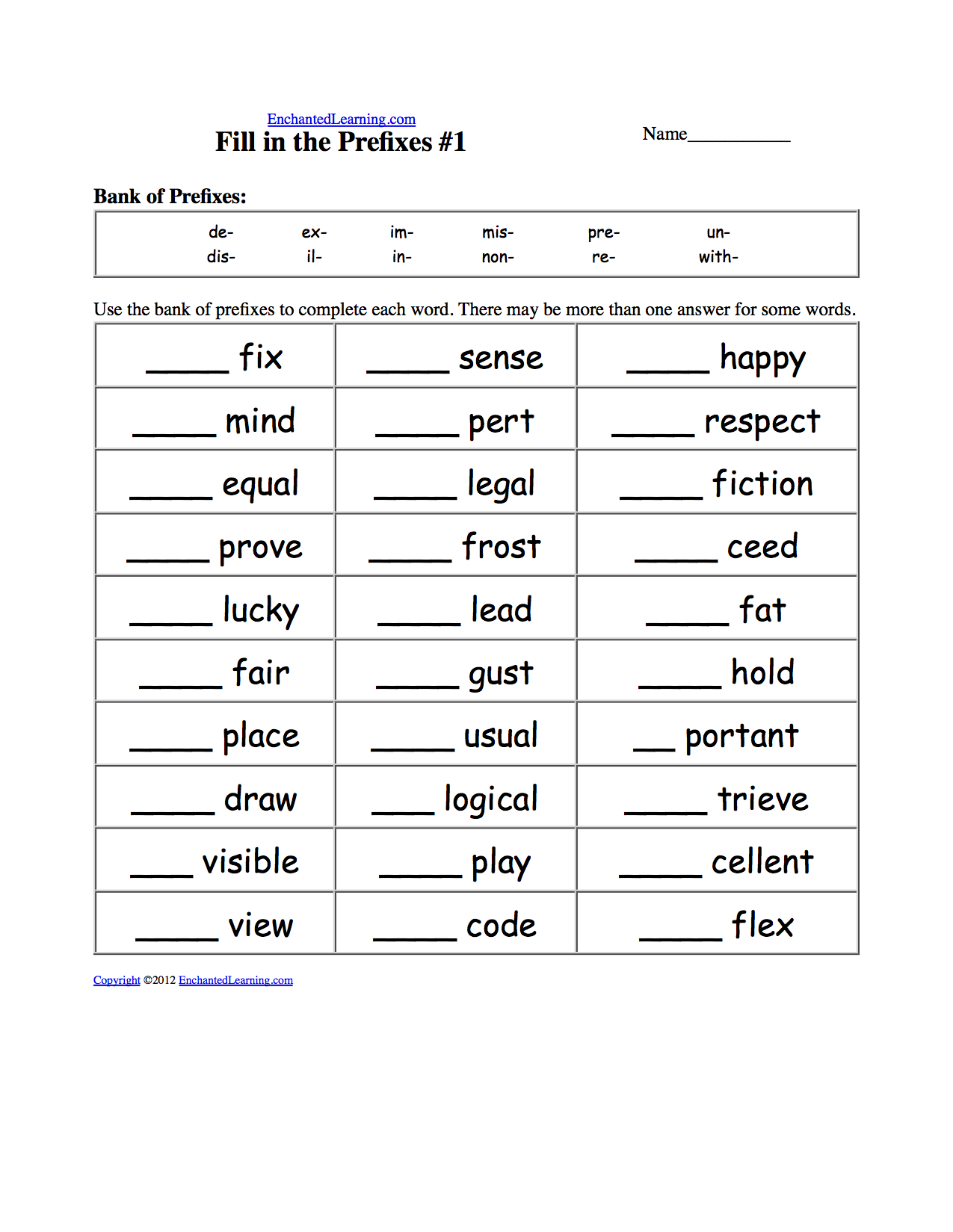
- Un-: meaning "not" or "opposite of" (e.g., unhappy, undo)
- Re-: meaning "again" or "back" (e.g., redo, return)
- Pre-: meaning "before" (e.g., preview, precede)
- Dis-: meaning "not" or "opposite of" (e.g., disagree, disappear)
- Mis-: meaning "wrongly" or "badly" (e.g., misunderstand, misbehave)


When a student learns that "un-" means "not," they can deduce that unbelievable means "not believable," unbreakable means "not breakable," and so on. This ripple effect dramatically accelerates vocabulary growth and fosters a deeper understanding of word relationships. Without this foundational knowledge, learners are left to memorize individual words, a far less efficient and often frustrating process.
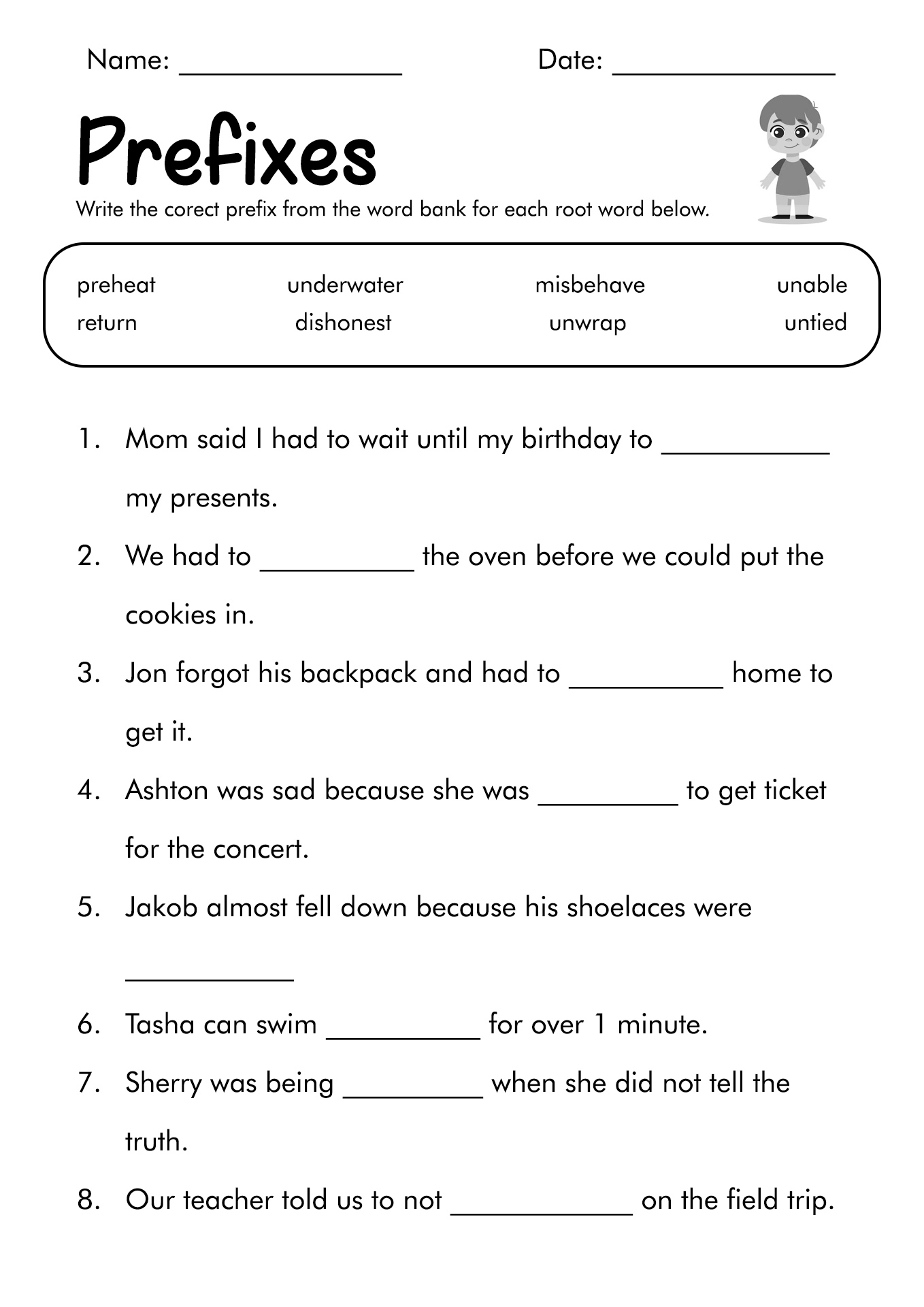
What Are Prefixes Worksheets and Why Are They Essential?
Prefixes worksheets are structured exercises designed to help learners identify, understand, and apply prefixes to base words. They provide a systematic and repetitive way to reinforce learning, moving from simple recognition to complex application. Their essential nature stems from several factors:

- Systematic Learning: They break down the complex task of vocabulary building into manageable steps.
- Reinforcement: Repeated exposure to prefixes in different contexts helps solidify understanding.
- Application: Worksheets move beyond passive learning, requiring students to actively use prefixes to form new words or understand their meanings.
- Assessment: They offer a clear way for educators to gauge a student’s comprehension and identify areas needing further instruction.
- Differentiation: Worksheets can be tailored to various skill levels, allowing for personalized learning experiences.

The Anatomy of Effective Prefixes Worksheets
Not all prefixes worksheets are created equal. High-quality worksheets possess several key characteristics that maximize their educational impact:
- Clear Instructions: Students should easily understand what is expected of them.
- Varied Exercise Types: To keep engagement high and cater to different learning styles.
- Appropriate Difficulty: Exercises should challenge students without overwhelming them.
- Contextual Relevance: Whenever possible, prefixes should be presented within meaningful sentences or passages.
- Answer Keys: For self-correction or quick teacher grading.
- Engaging Design: Visually appealing layouts can enhance motivation.
Diverse Types of Prefixes Worksheets for Varied Learning Styles
The versatility of prefixes worksheets is one of their greatest strengths. They can be designed in numerous formats, each targeting slightly different skills:
-
Matching Worksheets:
- Prefix to Meaning: Students match prefixes (e.g., "un-") to their definitions ("not").
- Prefix to Base Word: Students match prefixes to base words to form new words (e.g., "re-" to "write").
- Prefixed Word to Definition: Students match the entire prefixed word (e.g., "unhappy") to its meaning ("not happy").
-
Fill-in-the-Blank Worksheets:
- Add the Correct Prefix: Students are given a base word and a sentence, and they must add the appropriate prefix to complete the sentence (e.g., "She had to _____do her homework because it was messy. (re)").
- Complete the Sentence: Students choose from a word bank of prefixed words to complete sentences contextually.
-
Word Building Worksheets:
- Students are given a list of prefixes and a list of base words, and they must combine them to create as many real words as possible. This encourages exploration and experimentation.
-
Sentence Creation Worksheets:
- Students are given a list of prefixed words and must use each word correctly in a unique sentence. This assesses comprehension and application.
-
Definition Worksheets:
- Students are given prefixed words and must write their definitions, explaining how the prefix changes the base word’s meaning (e.g., "disagree: to not agree").
-
Passage Analysis Worksheets:
- Students read a short passage and identify all the words containing prefixes. They then list these words and explain the meaning of each prefix within its context. This promotes critical reading.
-
Error Identification Worksheets:
- Students are presented with sentences where prefixed words might be used incorrectly, and they must identify and correct the errors.
-
Interactive/Digital Worksheets:
- Online platforms offer drag-and-drop activities, clickable definitions, and instant feedback, often incorporating gamified elements to boost engagement.
Benefits Across the Educational Spectrum
The advantages of integrating prefixes worksheets into a language arts curriculum are far-reaching, impacting various stakeholders:
-
For Students:
- Accelerated Vocabulary Growth: The most obvious benefit, as understanding prefixes provides a shortcut to thousands of words.
- Enhanced Reading Comprehension: Students can decode unfamiliar words in texts, leading to smoother, more effective reading.
- Improved Spelling: Understanding how prefixes attach to base words helps in correct spelling.
- Stronger Writing Skills: A broader vocabulary allows for more precise and sophisticated expression.
- Increased Confidence: The ability to decipher new words independently builds academic self-assurance.
-
For Teachers:
- Effective Instructional Tool: Worksheets provide a structured way to teach and reinforce complex concepts.
- Easy Differentiation: Can be adapted for various learning levels and abilities.
- Assessment Aid: Quick and efficient way to gauge student understanding and pinpoint areas of difficulty.
- Time-Saving: Ready-made worksheets save preparation time, allowing teachers to focus on instruction.
-
For Parents/Homeschoolers:
- Supplemental Learning: Provide excellent resources for reinforcing classroom learning at home.
- Engaging Activities: Can make vocabulary practice less daunting and more enjoyable.
- Direct Involvement: Allow parents to actively participate in their child’s language development.
-
For ESL/EFL Learners:
- Crucial for Language Acquisition: Prefixes are fundamental to understanding the morphological structure of English, which is vital for non-native speakers.
- Bridge to Fluency: Helps in rapidly expanding their functional vocabulary.
Strategies for Maximizing the Impact of Prefixes Worksheets
Simply handing out prefixes worksheets isn’t enough. To truly unlock their potential, consider these pedagogical strategies:
- Introduce Gradually: Begin with one or two common prefixes at a time, allowing students to master them before moving on.
- Connect to Prior Knowledge: Ask students if they already know words with a particular prefix.
- Encourage Discussion: Before, during, and after completing a worksheet, discuss the meanings of prefixes, base words, and the new words formed.
- Provide Immediate Feedback: Correcting mistakes promptly helps solidify correct understanding.
- Integrate with Reading: Encourage students to identify and analyze prefixed words in the books they are reading.
- Make It Fun: Incorporate games, challenges, or even creative writing prompts alongside the worksheets.
- Review and Reinforce: Regularly revisit previously learned prefixes to ensure retention.
- Context is Key: Always emphasize that the meaning of a prefixed word can sometimes be nuanced by its context.
Common Prefixes to Prioritize in Worksheets
While there are many prefixes, focusing on the most frequent ones will yield the greatest return on investment for learners. Worksheets should prioritize:
- un- (not, opposite): unhappy, undo
- re- (again, back): rewrite, return
- pre- (before): preview, predict
- dis- (not, opposite): dislike, disagree
- mis- (wrongly, badly): misunderstand, misbehave
- non- (not): nonfiction, nonsense
- sub- (under, below): submarine, subway
- super- (above, beyond): supervise, superhero
- inter- (between, among): international, interactive
- anti- (against): antivirus, antibiotic
- pro- (for, forward): promote, progress
- ex- (out of, former): exit, ex-president
- co- (with, together): co-pilot, cooperate
- de- (down, away, opposite): decompose, dethrone
- trans- (across, beyond): transport, translate
Beyond the Worksheet: A Holistic Approach to Prefix Mastery
While prefixes worksheets are invaluable, they are but one component of a comprehensive vocabulary strategy. To truly master prefixes, learners should also:
- Read Extensively: Encountering words in natural contexts is the best way to internalize their meanings.
- Engage in Discussions: Talking about words and their structures deepens understanding.
- Play Word Games: Board games, online quizzes, and informal word games can make learning enjoyable.
- Use New Words: Encourage students to actively incorporate new prefixed words into their speaking and writing.
- Keep a Vocabulary Journal: A personal record of new words and their meanings can be a powerful learning tool.
Conclusion
In the journey of language acquisition, understanding prefixes is a pivotal step towards unlocking the full potential of English vocabulary. Prefixes worksheets serve as a highly effective, versatile, and essential tool in this endeavor. From simple matching exercises to complex contextual analysis, they provide the structured practice necessary for learners of all ages and levels to decode, comprehend, and confidently utilize a vast array of words. By systematically integrating these worksheets with engaging instructional strategies and a holistic approach to vocabulary building, educators and parents can empower students to become independent and masterful communicators, equipped with the linguistic tools to succeed in academic pursuits and beyond. Investing time and effort into the consistent use of high-quality prefixes worksheets is, without doubt, an investment in linguistic proficiency and lifelong learning.
